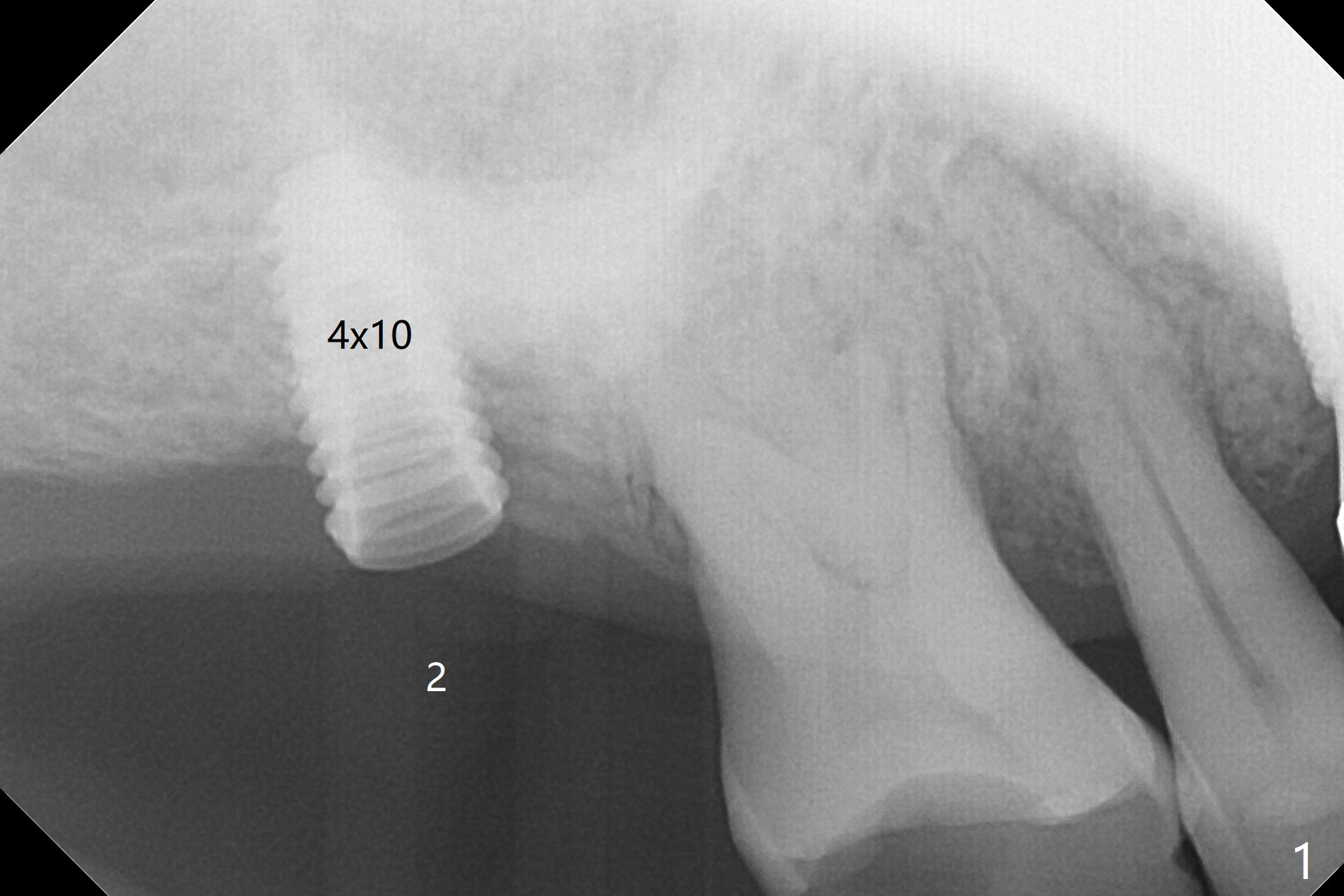
.jpg)
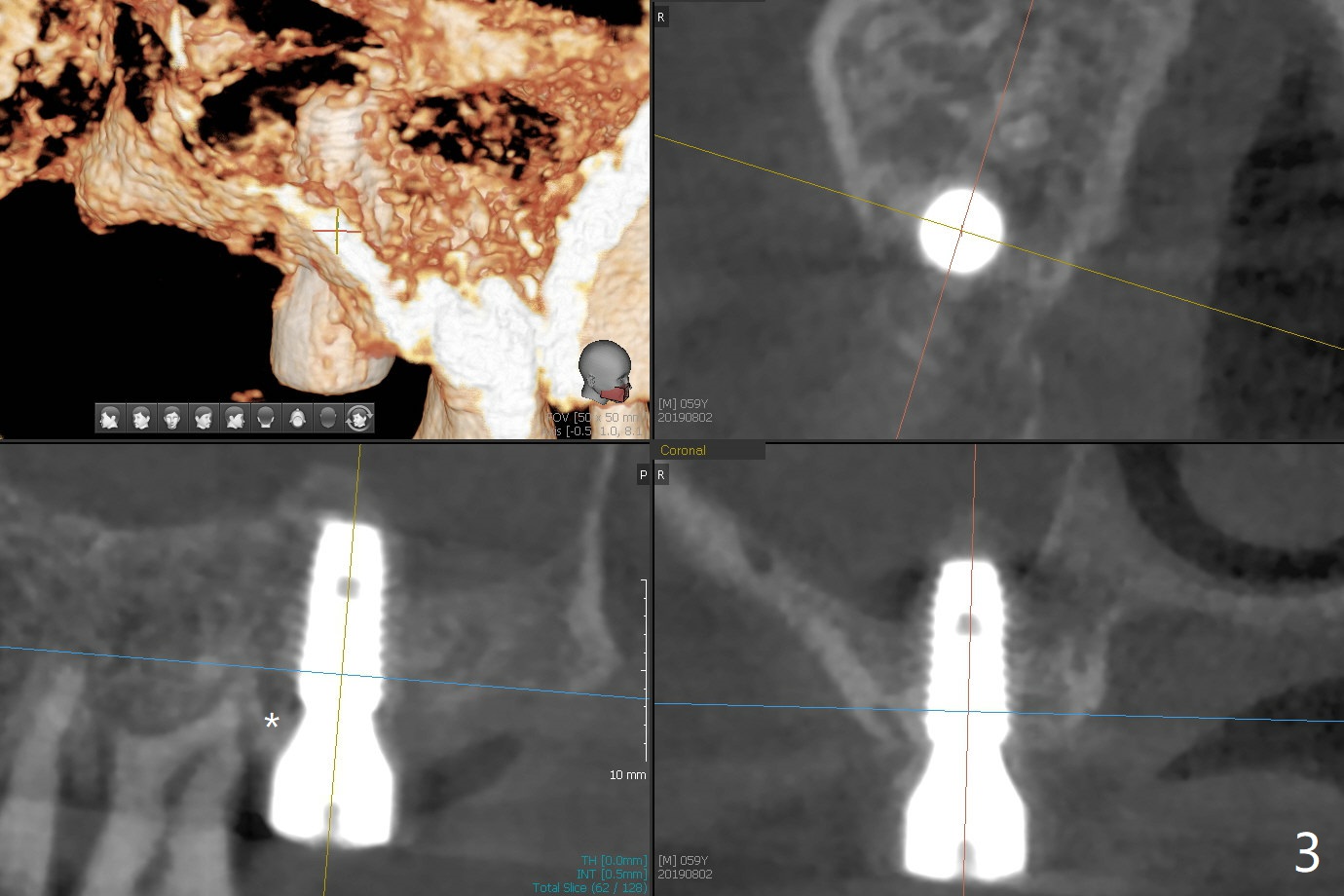
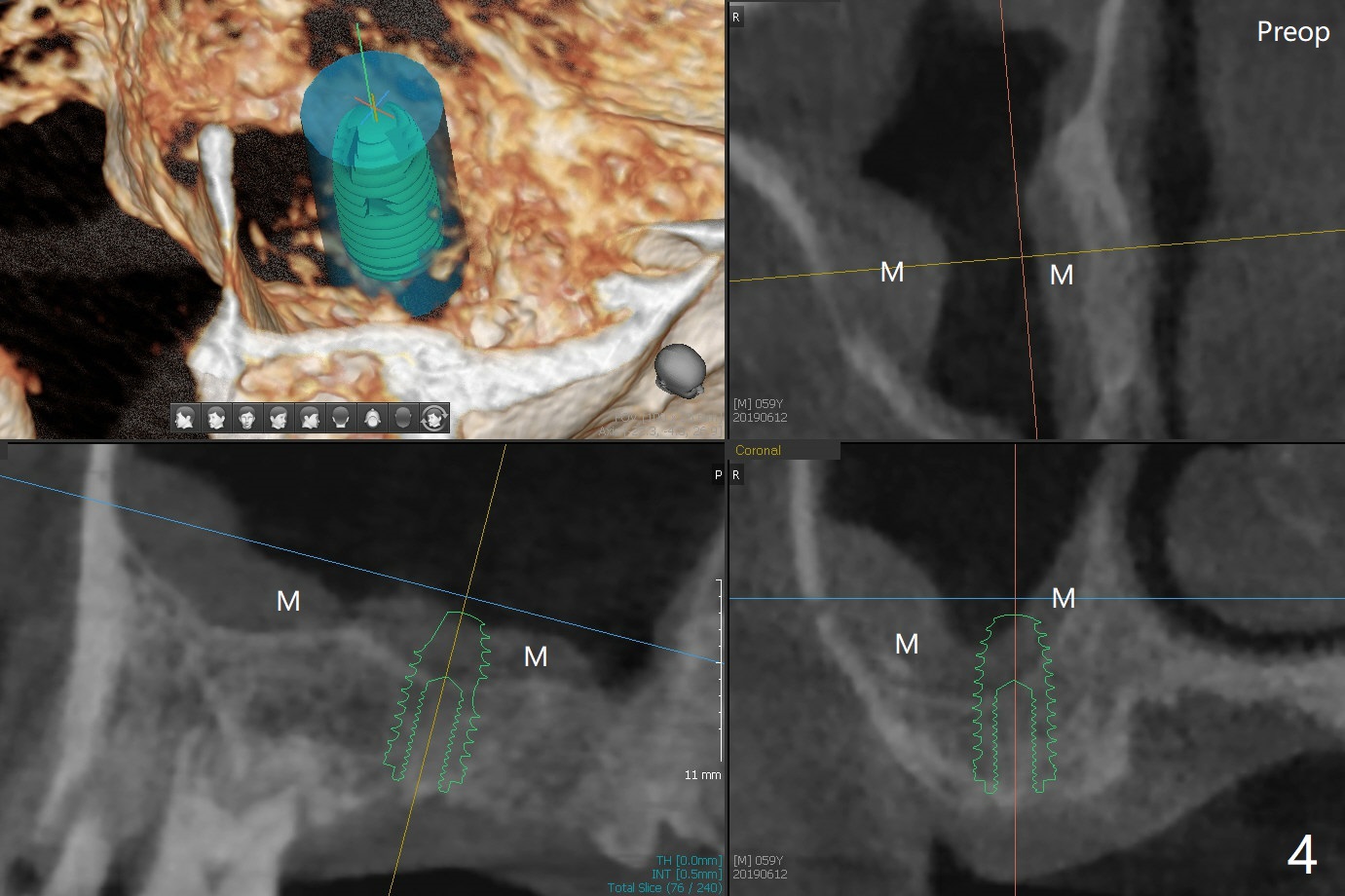
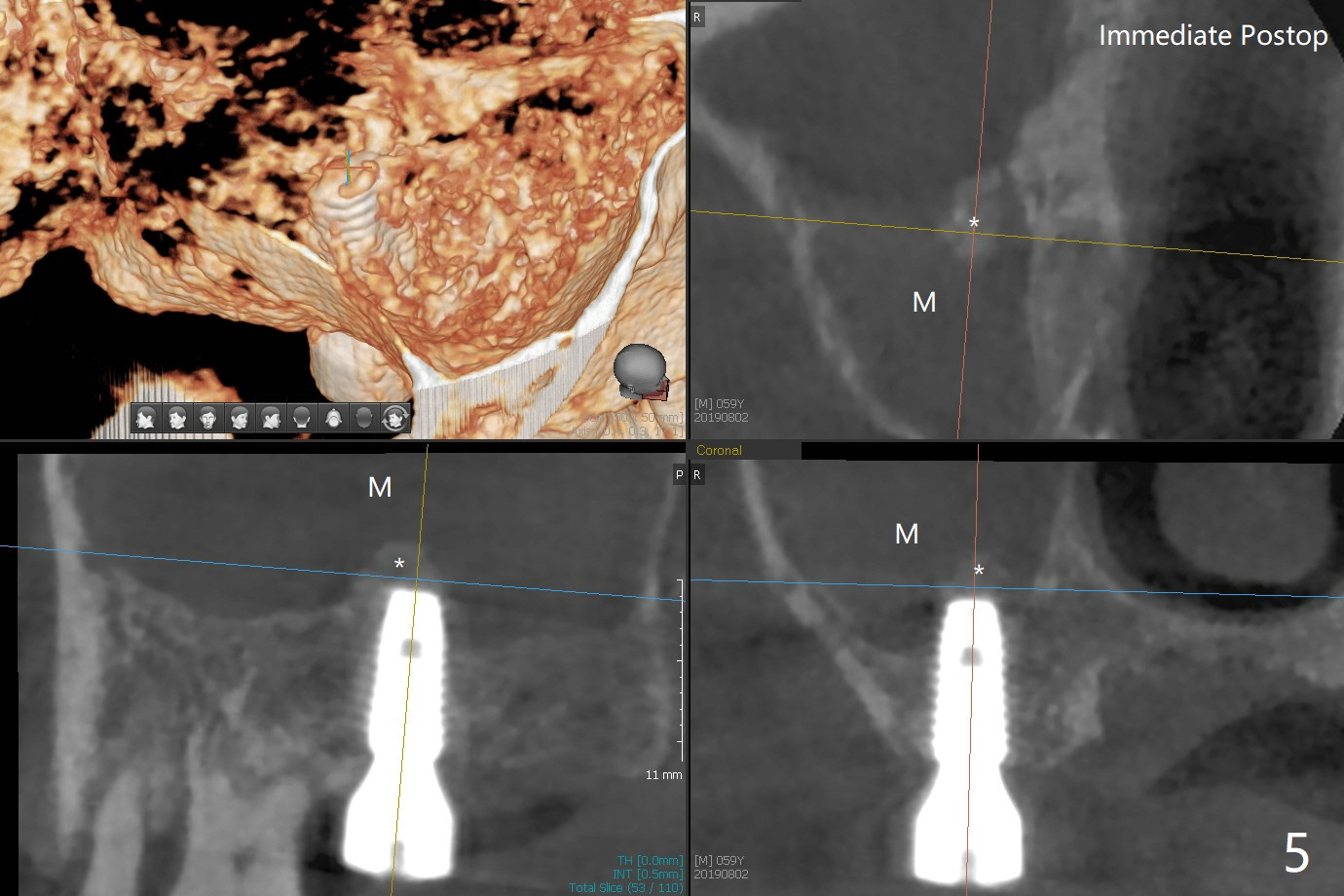
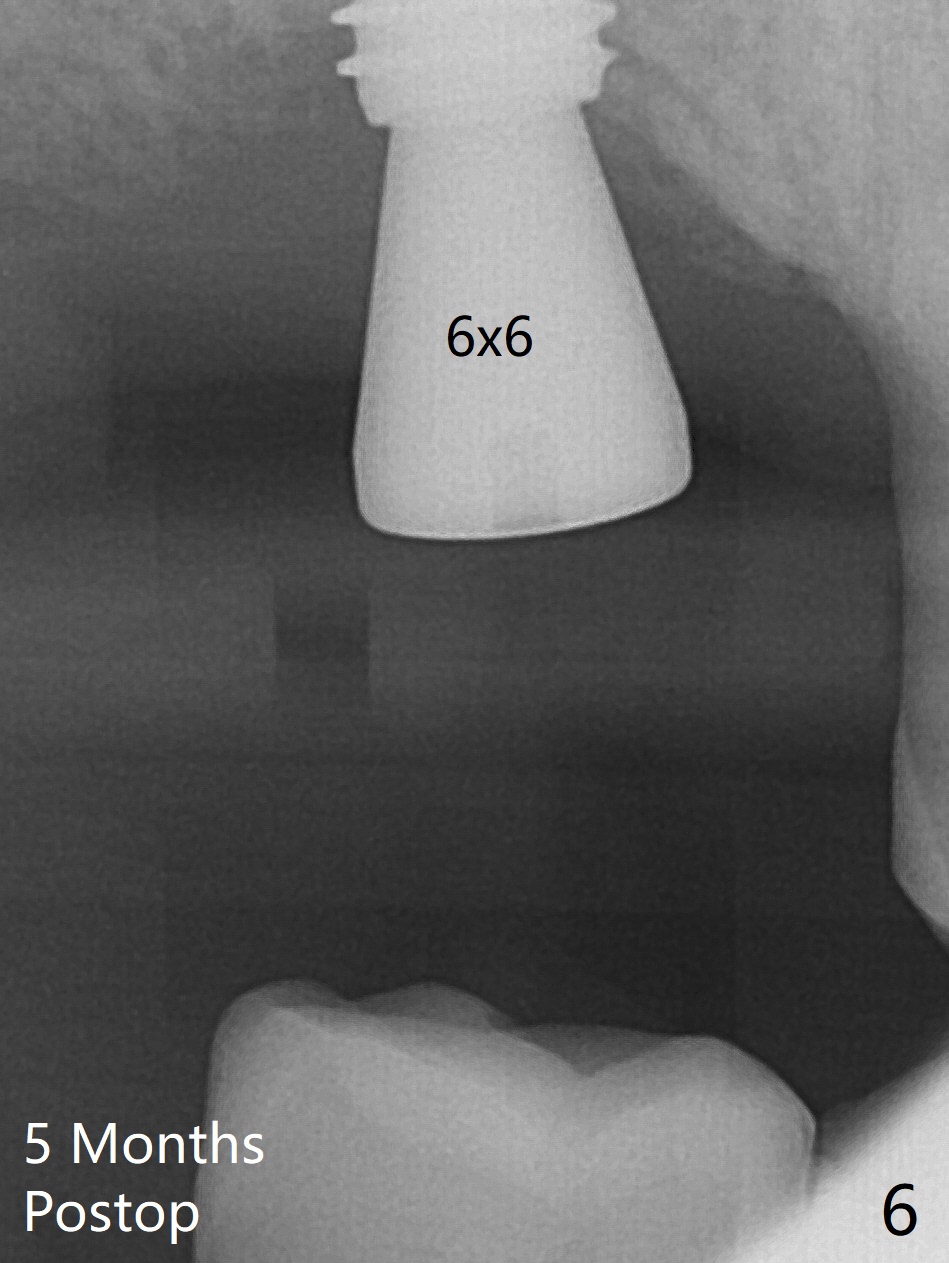
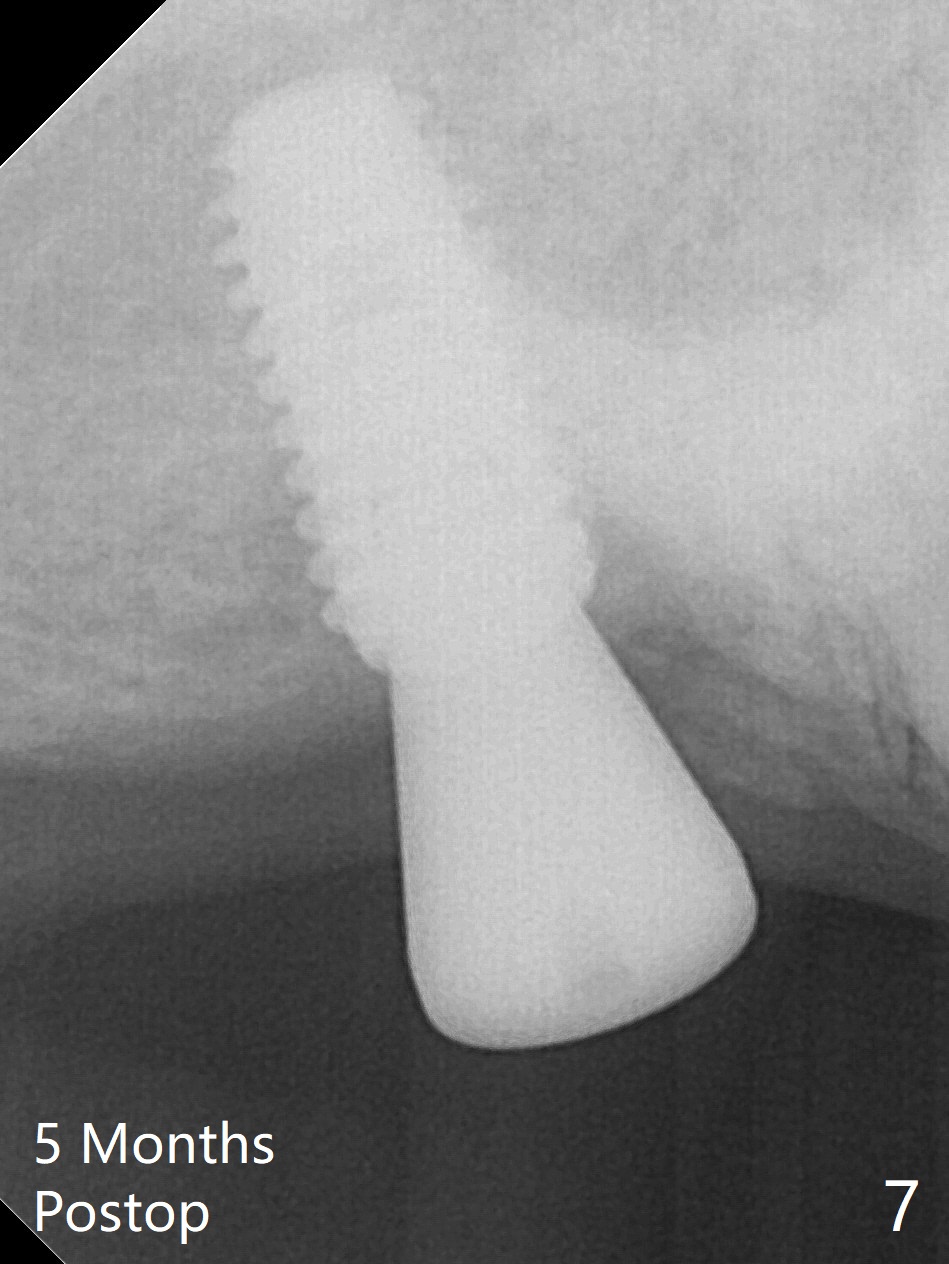
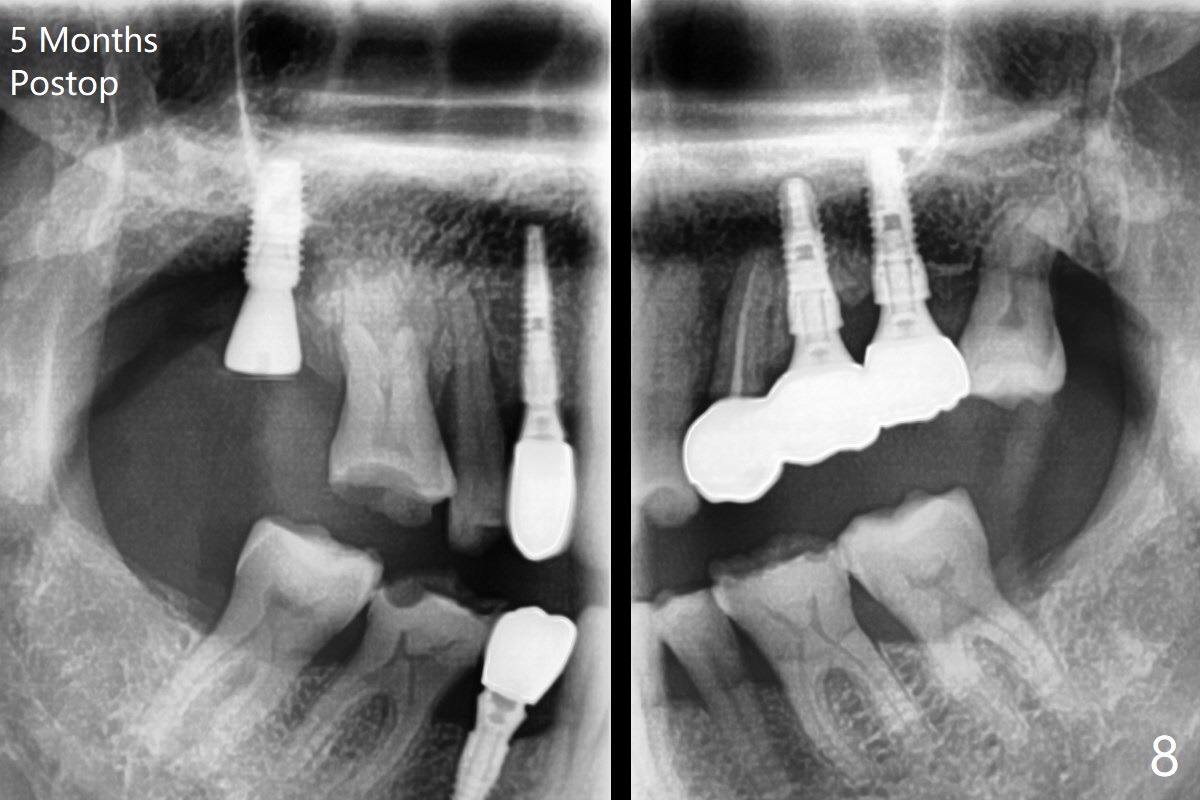
 |
.jpg) |
 |
|
 |
 |
 |
 |
 |
|||
Sinus Lift Without Guide
Two things happen immediately before this surgery. A SM implant is found to fail related to bruxism and poor oral hygiene, ~ 5 years in function; a UF implant will be used instead. DIO Sinus Approach Kit has not been autoclaved; therefore the free-hand one has to be used with caution. In fact the procedure goes on apparently smoothly in spite of the fact that the patient with medical knowledge is nervous about the risk of sinus lift. After 4.0x8.5 mm Neo Navi drill with 12 mm offset, the 3.6 mm sinus safety drill is used from 7 to 9 mm in length, followed by water balloon, PRF membranes (x2) and mixture of autogenous bone graft and allograft and 4.5x10 mm dummy implant (Fig.1). The definitive implant is placed with satisfactory stability (Fig.2), but a 6.5x7(4) mm healing abutment is close to the mesial crest (*). The former is reloaded following 6.0 mm Bone Profile Drill (Fig.3) and then is changed to a 6x6 mm IS one. The patient reports nasal hemorrhage immediately returning home, but there is no similar episode a few hours later. Re-analysis of preop (Fig.4) and immediate postop (Fig.5) CT shows that water balloon technique in fact swells the sinus membrane (M) instead elevating it. It is safe to place more bone graft (Fig.5 *). There is pain when the 6x6 mm healing abutment is being removed nearly 5 months postop (Fig.6.7). The patient complains of mild sinus discomfort, although panoramic X-ray does not show abnormality (Fig.8). He will return for recheck for implant stability (low bone density) before impression 2-4 months later.
Return to Upper Molar Immediate Implant, Trajectory II Xin Wei, DDS, PhD, MS 1st edition 08/02/2019, last revision 12/29/2019